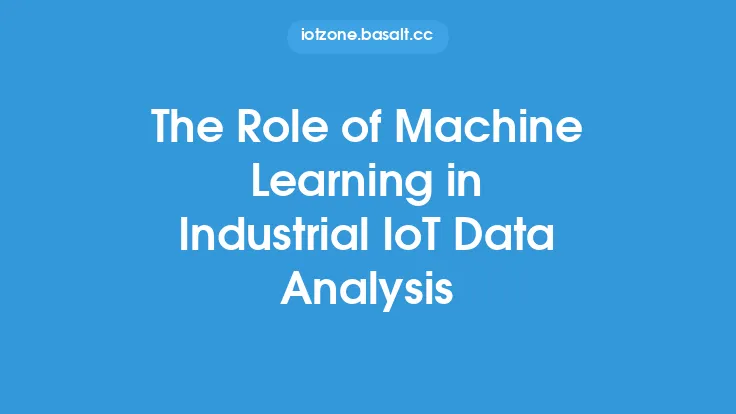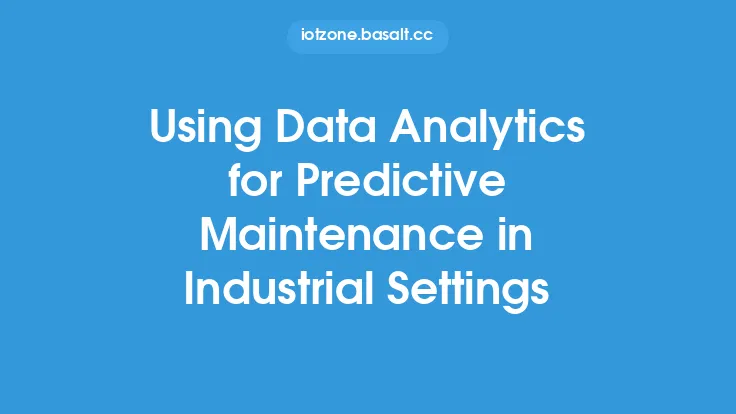In industrial settings, anomaly detection is a critical task that involves identifying unusual patterns or behaviors in data that may indicate potential problems or opportunities for improvement. Machine learning, a subset of artificial intelligence, has emerged as a powerful tool for anomaly detection in industrial settings. By leveraging machine learning algorithms and techniques, industrial organizations can automatically detect anomalies in real-time, reducing the risk of equipment failures, improving product quality, and optimizing production processes.
Introduction to Anomaly Detection
Anomaly detection is the process of identifying data points or patterns that are significantly different from the norm. In industrial settings, anomalies can manifest in various forms, such as unusual sensor readings, unexpected changes in production rates, or unusual patterns in equipment performance. Anomaly detection is essential in industrial settings because it enables organizations to identify potential problems before they become major issues, reducing downtime, and improving overall efficiency.
Machine Learning for Anomaly Detection
Machine learning algorithms can be broadly classified into two categories: supervised and unsupervised learning. Supervised learning algorithms require labeled data to learn patterns and relationships, whereas unsupervised learning algorithms can learn patterns and relationships from unlabeled data. For anomaly detection, unsupervised learning algorithms are often preferred because they can identify unusual patterns in data without prior knowledge of what constitutes an anomaly.
Some common machine learning algorithms used for anomaly detection include:
- K-Nearest Neighbors (KNN): KNN is a simple algorithm that identifies anomalies by measuring the distance between data points. Data points that are farthest from their neighbors are considered anomalies.
- Local Outlier Factor (LOF): LOF is an algorithm that measures the density of data points in a given region. Data points that have a low density are considered anomalies.
- One-Class Support Vector Machine (OCSVM): OCSVM is an algorithm that learns the normal behavior of a system and identifies anomalies as data points that fall outside the learned boundary.
- Autoencoders: Autoencoders are neural networks that learn to compress and reconstruct data. Anomalies are identified as data points that have a high reconstruction error.
Industrial Applications of Anomaly Detection
Anomaly detection has numerous applications in industrial settings, including:
- Predictive Maintenance: Anomaly detection can be used to predict equipment failures, reducing downtime and improving overall efficiency.
- Quality Control: Anomaly detection can be used to identify defects or anomalies in products, improving product quality and reducing waste.
- Process Optimization: Anomaly detection can be used to identify unusual patterns in production processes, optimizing production rates and reducing energy consumption.
- Cybersecurity: Anomaly detection can be used to identify unusual patterns in network traffic, detecting potential cyber threats and improving overall security.
Challenges and Limitations
While machine learning has shown great promise in anomaly detection, there are several challenges and limitations that must be addressed. These include:
- Data Quality: Machine learning algorithms require high-quality data to learn patterns and relationships. Poor data quality can lead to poor anomaly detection performance.
- Class Imbalance: Anomaly detection datasets often suffer from class imbalance, where the number of normal data points far exceeds the number of anomalous data points. This can lead to poor anomaly detection performance.
- Concept Drift: Anomaly detection models can suffer from concept drift, where the underlying patterns and relationships in the data change over time. This can lead to poor anomaly detection performance.
Best Practices for Implementation
To implement machine learning for anomaly detection in industrial settings, several best practices must be followed. These include:
- Data Preprocessing: Data must be preprocessed to ensure that it is of high quality and suitable for machine learning algorithms.
- Model Selection: The choice of machine learning algorithm depends on the specific application and dataset. Careful model selection is essential to ensure good anomaly detection performance.
- Model Evaluation: Anomaly detection models must be evaluated using metrics such as precision, recall, and F1-score to ensure that they are performing well.
- Model Updating: Anomaly detection models must be updated regularly to ensure that they can adapt to changing patterns and relationships in the data.
Conclusion
Machine learning has emerged as a powerful tool for anomaly detection in industrial settings. By leveraging machine learning algorithms and techniques, industrial organizations can automatically detect anomalies in real-time, reducing the risk of equipment failures, improving product quality, and optimizing production processes. While there are several challenges and limitations that must be addressed, careful implementation and adherence to best practices can ensure good anomaly detection performance. As the industrial internet of things (IIoT) continues to grow and evolve, machine learning for anomaly detection will play an increasingly important role in improving efficiency, productivity, and overall performance.





